Reusable diapers are the alternative to disposable diapers, with the added bonus that they are environmentally friendly, so much cheaper and healthier than disposable.
I have been using reusable diapers, including reusable swim diapers, successfully with both my daughters for more than 3 years now and never looked back. It took some trial and error, particularly at the beginning, and I tried more types / combinations of cloth diapers than I can remember. But once I found what worked for me, it all became so easy!
I have put together here a lot of information with tips and recommendations on how to have a stress-free cloth diapering experience.
If you are looking for an in-depth guide to cloth diapers, or if you are already using cloth diapers but struggling with leaky or smelly diapers and need help with some troubleshooting, then have a look at my eBook: The Ultimate Guide to Cloth Diapers – everything you need to know for a stress-free cloth diapering experience.
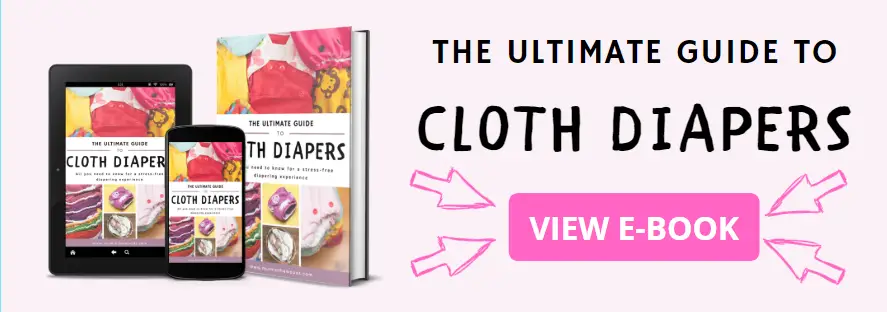
Enjoy and happy diapering 🙂
Why Reusable Diapers?
Why choose reusable diapers over disposable diapers? Well, I hope that if you are reading this then you already have a general idea of why it would be a good idea to use reusable diapers. However, let me rationalize it for you. This is what reusable diapers do:
- Save you money
- Help save the planet
In fact, even though particularly cloth diapers require a considerable initial investment compared to disposable diapers, they will also end up saving you a lot of money in the long run. Disposable diapers will end up costing you about double the amount of money compared to cloth diapers!
Not to mention that if you consider that almost 4 million babies are born every year just in the US (data from 2018), if every mom could save one diaper a day by using cloth diapers, that would save 1.5 billion diapers from going into the landfill each year!
For more information on the difference between cloth and disposable diapers, read:
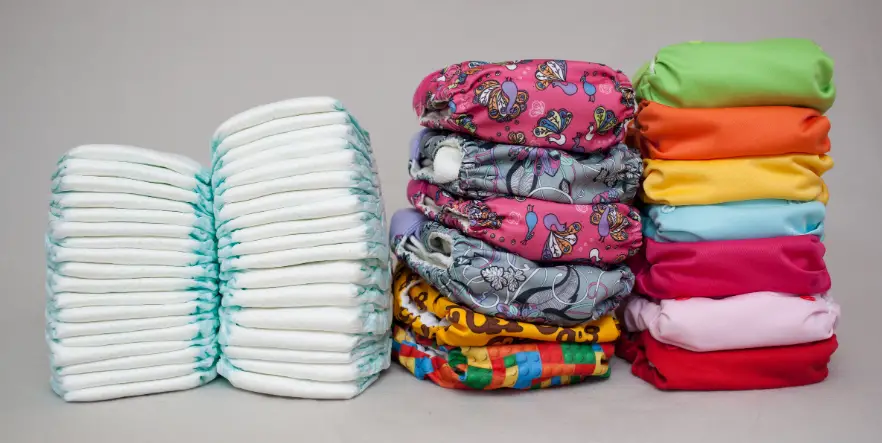
The advantages of disposable diapers
If cloth diapers are so much cheaper than disposable diapers, then why are so many people still using disposable ones? Here’s the main reasons behind people choosing disposable diapers over cloth:
- Cloth diapers increase your water and electricity bills because they need to be constantly washed.
- Disposable diapers don’t need to be cleaned, so you don’t get dirty and you don’t waste time cleaning them.
- Disposable diapers are easier to dispose if you are outside.
- Disposable diapers hold wees for longer.
- Disposable diapers are not as bulky.
I only agree with the fact that disposable diapers are not as bulky as cloth diapers and that they are easier to dispose if you are outside 🙂
First of all, once you have a baby, you are going to do a washing every day or every other day already, I guarantee you! So, adding a few cloth diapers into the washing is not going to make any difference.
Then, OK, disposable diapers don’t need to be cleaned. But it’s also true that cleaning cloth diapers doesn’t have to be a hard or long / dirty process like most people imagine. You can read here my tips on how to wash cloth diapers.
Lastly, it’s not true that disposable diapers hold wees for longer. If you choose the right cloth diaper (or combination of diapers), it will last as long as a disposable! It took me a while to find a cloth diaper solution that would last through the night for my second daughter, but once I did it was totally worth it. I now keep her with the same cloth diaper for 12 hours at night.
My own experience
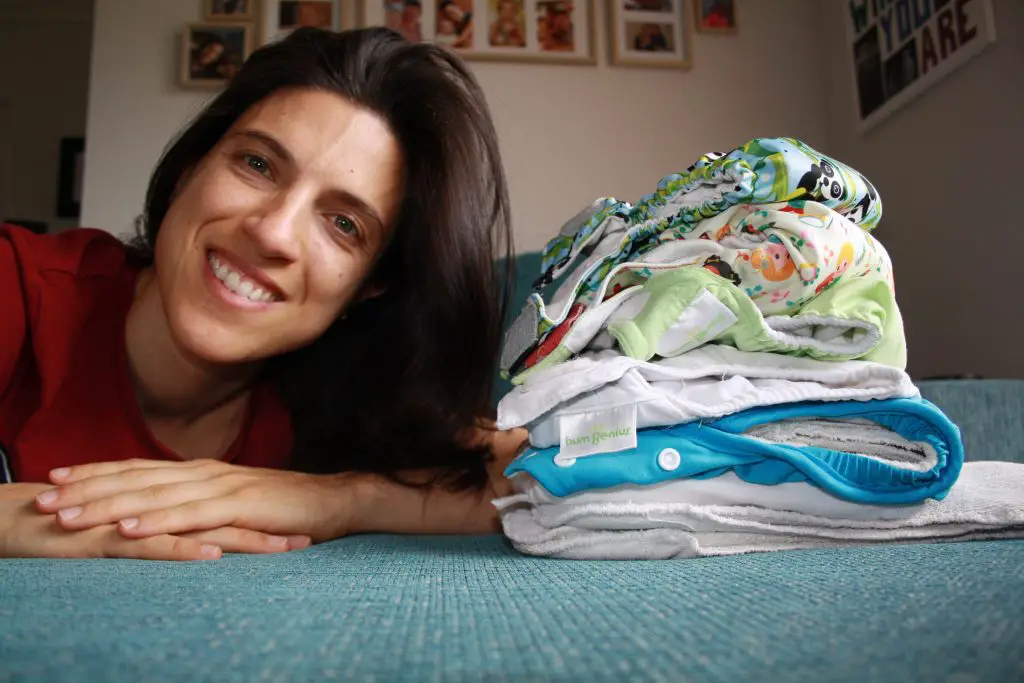
What I have done with both my kids is use disposable diapers if I know I am going to be outside for a very long time. Particularly when very young and pooing a lot. When they started eating solids, they were only pooing once or twice a day, so the likelihood of having multiple poos in one outing was very low. From 6 month onward I have only used cloth diapers during the day.
What I have also done is use disposable diapers at night in multiple occasions. Like I mentioned before, it took me a while to find the best cloth diaper solution for nighttime.
The great thing about cloth diapering is that it doesn’t have to be all or nothing. You can use a combination of both reusable and disposable and still feel good about doing something good for your baby and the environment.
My advice to you: don’t stress too much about it! Do what you can and what fits with your lifestyle. Be proud of using cloth diapers as much as you can but don’t beat yourself up if you use a disposable diaper here and there.
The different types of Cloth Diapers
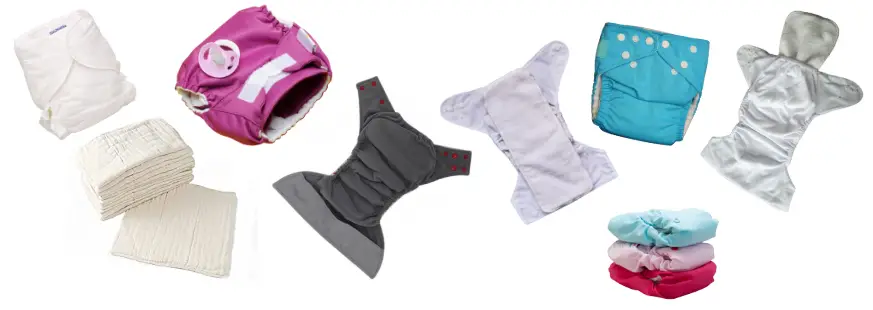
Cloth Diapers come in many different types and different combinations: cover separate from the absorbent layers or all together in one piece, with a pocket, with a semi-detached insert for faster drying, with snaps or hook & loop, etc. This can be quite confusing when trying to decide what cloth diapers to buy for your baby. The truth is that no type is better than the others: it all comes down to what works for you and your family.
Specifically, there are 6 different types of cloth diapers:
- Flat
- Prefold
- Fitted
- Pocket / Modern
- All-In-One
- All-In-Two / Hybrid
I have put together here a more in-depth guide on the different types of cloth diapers out there, with their pros and cons and personal recommendations:
You can also read:
- The Best Fitted Cloth Diapers
- The Best All In One Cloth Diapers
- The Best Pocket / Modern Cloth Diapers
- The Best All-In-Two / Hybrid Cloth Diapers
Cloth Diapers also come in different materials / fabric. Just to add more confusion to the mix! 🙂 Diapers made of synthetic material are definitely very popular amongst parents, as they are super fast at drying and are very fast at absorbing wees. They also don’t require any prepping when buying them new. However, they may not be the perfect solution for overnight or heavy wetters, as they are not as absorbent as natural materials. So, depending on your goals, you really need to think carefully about what cloth diapers or inserts to buy.
Cloth Diapers Materials
Almost all modern cloth diapers come with a waterproof cover, and this is usually made of PUL (polyurethane laminate) or TPU (thermoplastic polyurethane). The difference between PUL and TPU is that TPU is a solvent-free and biodegradable material. The process to create TPU is low in toxicity and is much better for the environment compared to PUL.
Other materials used for waterproof covers can be waterproof nylon, fleece (synthetic material) or wool.
The absorbency layers, on the other hand, come in a wide range of different materials:
- Bamboo: this is a very soft and absorbent material, even more absorbent than cotton, which makes it perfect for an overnight solution. It is hypoallergenic and, therefore, good for babies with sensitive skin. It is also very durable compared to synthetic fibers, lasting much longer.
- Cotton: this is the most popular fabric for making cloth diapers. It is more affordable than bamboo and still quite absorbent. It is also quite a strong fiber and, therefore, very durable. Cloth diapers often come in a combination of cotton with either bamboo or hemp.
- Organic Cotton: because of the unsustainable farming of cotton, more and more brands of cloth diapers are beginning to offer diapers made of organic cotton. This is farmed with less pesticides and, overall, it has a less impact on the environment. The one downside of organic cotton is that it doesn’t last as long as other fabrics.
- Hemp: this is another very absorbent fabric, more absorbent than cotton and less than bamboo. However, it doesn’t absorb water as quickly as cotton or polyester. As such, many cloth diapers come in a combination of hemp with cotton.
- Polyester: the main advantage of cloth diapers made of polyester is that they dry out incredibly fast and they can be used immediately without requiring any prepping. They are also incredibly absorbent, keeping your baby’s skin dry. However, they wear out and loose their absorbency quicker than cloth diapers made of natural fibers. Also, contrary to natural fibers, if you put pressure on the fabric, they can’t hold liquid in. For this reason, cloth diapers made of polyester have a reputation for leaking quite a lot. A good solution is a combination of polyester with a natural fiber.
- Fleece: this is a particular form of polyester. As such, it has the same features, advantages and disadvantages as polyester. The main difference from polyester is that it is a more breathable material.
How to wash cloth diapers
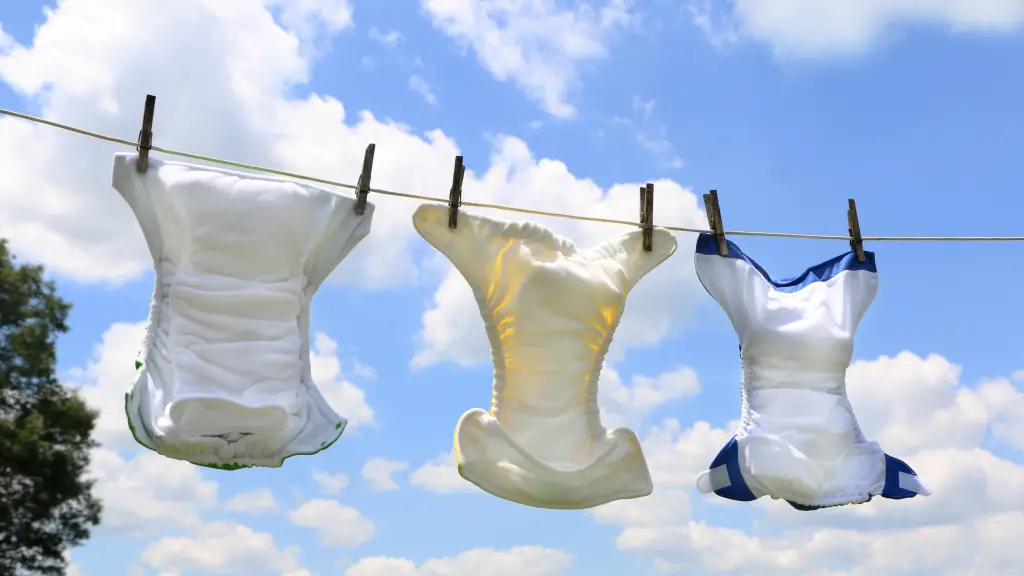
There is this stigma that changing cloth diapers is gross and takes a long time. So many parents are put off by cloth diapers just because they are scared of having to wash them. In reality, washing cloth diapers is not as complicated as most people think! And, nowadays, there are plenty of accessories that make it as simple, clean and quick as possible.
As long as you use liners to catch any solid waste, you can just flush any poo down the toilet and not touch it at all. A diaper sprayer can then be used to remove any remaining of the solid waste, and a waterproof bag can be used to store the cloth diaper until you wash it to contain any odors.
You DO NOT NEED to do separate washes or extra complicated cycles 🙂 Cloth diapers can safely be washed with the rest of your cloths. Just make sure to use the right amount of detergent: using too little or too much can make your diapers smelly.
Read the article below for the best tips on how to wash cloth diapers:
Washing Cloth Diapers in hard water
Most regions of the world have hard water to some degree. You may notice signs of hard water build-up on your sink, shower, faucet, or appliances. The minerals present in hard water can lead to smelly and leaky diapers, as well as to rashes or burns on your baby’s skin.
The solution is to add a bit of Calgon or Borax to your wash routine, as these are most accessible and effective water softeners with hard water.
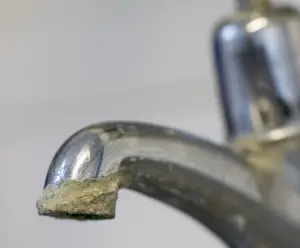
Prepping Cloth Diapers
When buying new diapers, particularly if made of natural fibers, you need to “prep” them to make sure they are they are ready to be used on your baby’s most sensitive areas.
To prep cloth diapers:
- Place diapers in your washer with an appropriate amount of detergent.
- Run a hot wash cycle.
- Rinse a second time to ensure all detergent has been removed.
- Machine dry on low heat. Using the dryer helps make the fabric quilter and softer, so it is recommended to use the dryer until your diapers are fully absorbent.
- Repeat the wash and dry cycle at least 3 times before putting the diaper on your baby.
Cloth diapers will not reach their optimal absorbency until about 10 washes, so I wouldn’t recommend using them at nighttime until then.
Stripping Cloth Diapers
If your cloth diapers start to smell very bed or leaking, or if they cause rashes on your baby’s bum, they may have some buildup and require stripping.
Buildup usually consists in detergent or hard water minerals buildup. But it can also be the result of using too much diaper rash cream that is not diaper-friendly.
Stripping your cloth diapers will eliminate any buildup and make your cloth diapers smell like new again.
For more information on what causes buildup, and how / when / why you should be stripping cloth diapers, read this related post: How to Strip Cloth Diapers.
Starting out with Cloth Diapers
Trial & Starter Kits
My main suggestion when starting out with cloth diapers is not to invest on a whole lot of diapers from one type/brand straight away, possibly before your baby is even born. Test a few different types, see what works for you and what doesn’t.
If you don’t want to spend money on new diapers that you may not end up using full time, I really recommend getting a trial kit! Nicki’s Diapers offers a 15-day trial period, after which you can decide to keep or return the them.
Another solution is to buy a starter kit. These come at a discounted price and include different types of cloth diapers, so you can test them all out before investing on any specific brand or type.
You can also look into places that rent cloth diapers, or buy some second-hand ones, just to you can test them out before buying them. Who knows, if they are in good condition, they may even last you till your baby is potty trained.
How many diapers do I need?
Once you’ve decided on the type(s) of diapers that works for you, the next dilemma is deciding how many you need to start with.
First of all, understand that newborns go through many more diapers (10-15 a day) than infants (6-10 a day) or toddlers (4-7 a day). So, if you are planning on using cloth diapers for your newborn, you need more diapers than if you planned on starting with an infant or a toddler. I would recommend a minimum of 30 diapers for a newborn and of 20 for an infant or a toddler.
That said, also consider the type of diaper that you are planning on using. For example, Fitted diapers or Hybrid diapers have a cover that can be re-used unless it gets dirty, while you keep changing the fitted diaper or insert. This means that you don’t need to buy a cover for each insert or Fitted diaper. I recommend buying a cover for every 3-5 Fitted diapers or inserts.
How to store cloth diapers?
Cloth diapers can take up quite a lot of space, so if you are wondering about storage solutions for your home, check out these genius cloth diapers storage ideas!
Reusable swim diapers
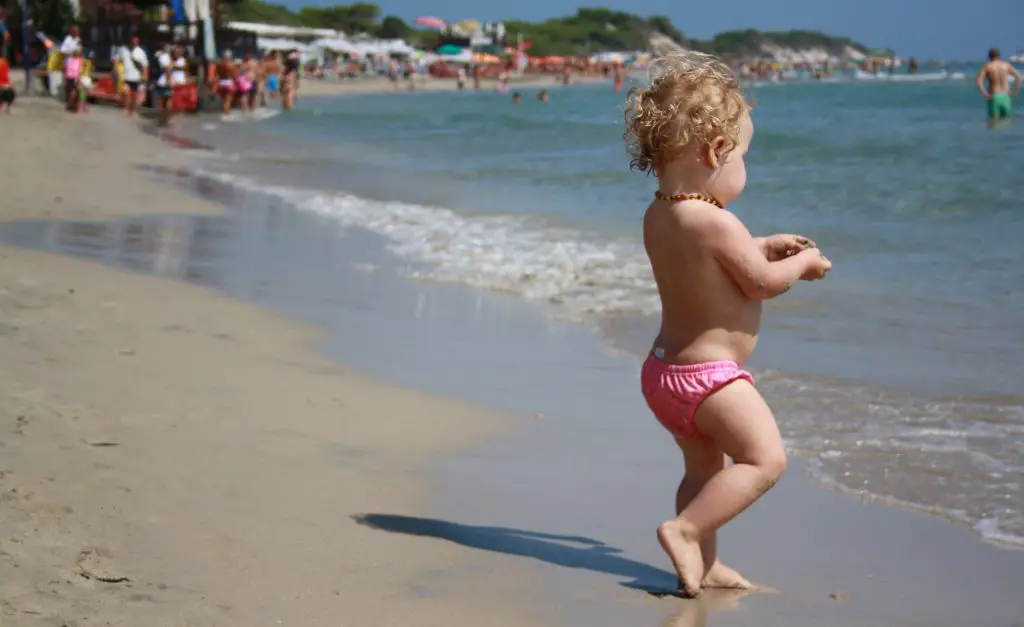
If you are considering cloth diapers, then reusable swim diapers should really be a no brainer. They are even easier and no excuse in the world should justify the use of disposable swim diapers.
These are perfect to go in the water at the pool or when at the beach with baby.
Related:
– How to Use Reusable Swim Diapers
– The Best Reusable Swim Diapers
– Baby Beach Essentials
Other Resources
For a comprehensive guide on cloth diapers, you can also have a look at my eBook: The Ultimate Guide to Cloth Diapers – everything you need to know for a stress-free cloth diapering experience. This eBook covers everything, from the different types of cloth diapers, to how to wash them, prep them, all the troubleshooting if you have a smelly or leaky diaper, all the diapers accessories, cloth diapers at daycare, etc. Click on the link below to find out more.

Did you find this useful? Pin It!
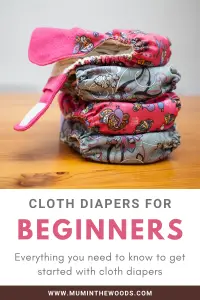

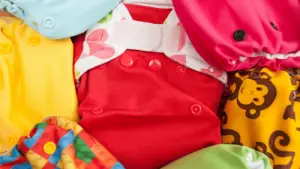
Wow, I had no idea there were so many different types of reusable diapers! Thank you for the informative write-up!
Thanks for the comment Sas!! Feel free to shout out if you need any help 🙂
I have cloth diapered with both of my little ones and the cost savings has been tremendous. This is great information that you’ve shared!
We used cloth diapers with our youngest. There are so many great options now that are easy to use and clean. Not to mention the cute patterns. Great comprehensive article about the options.